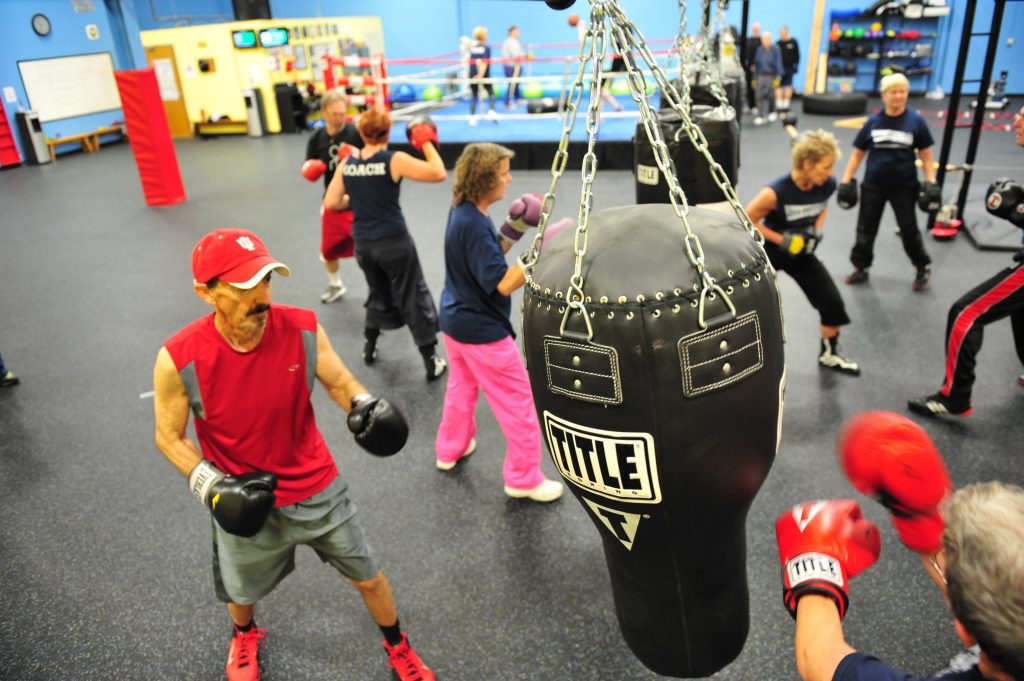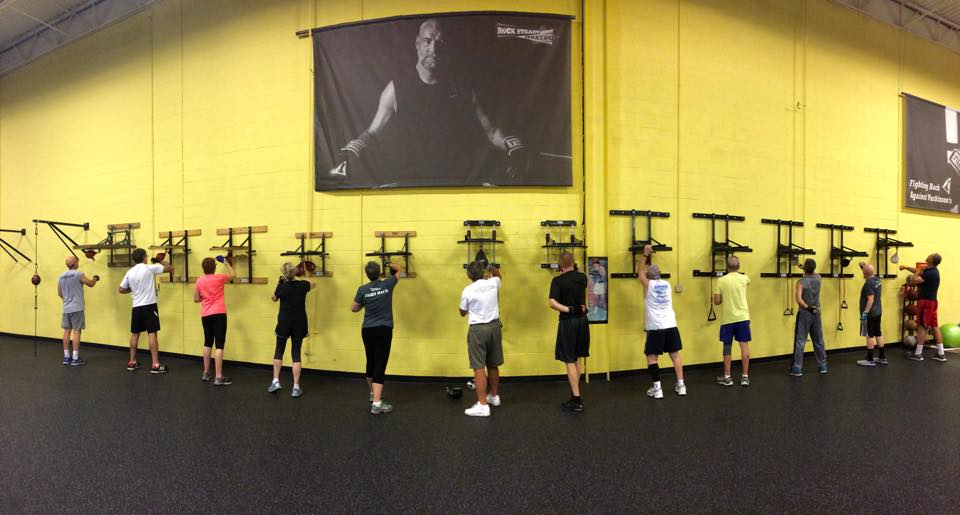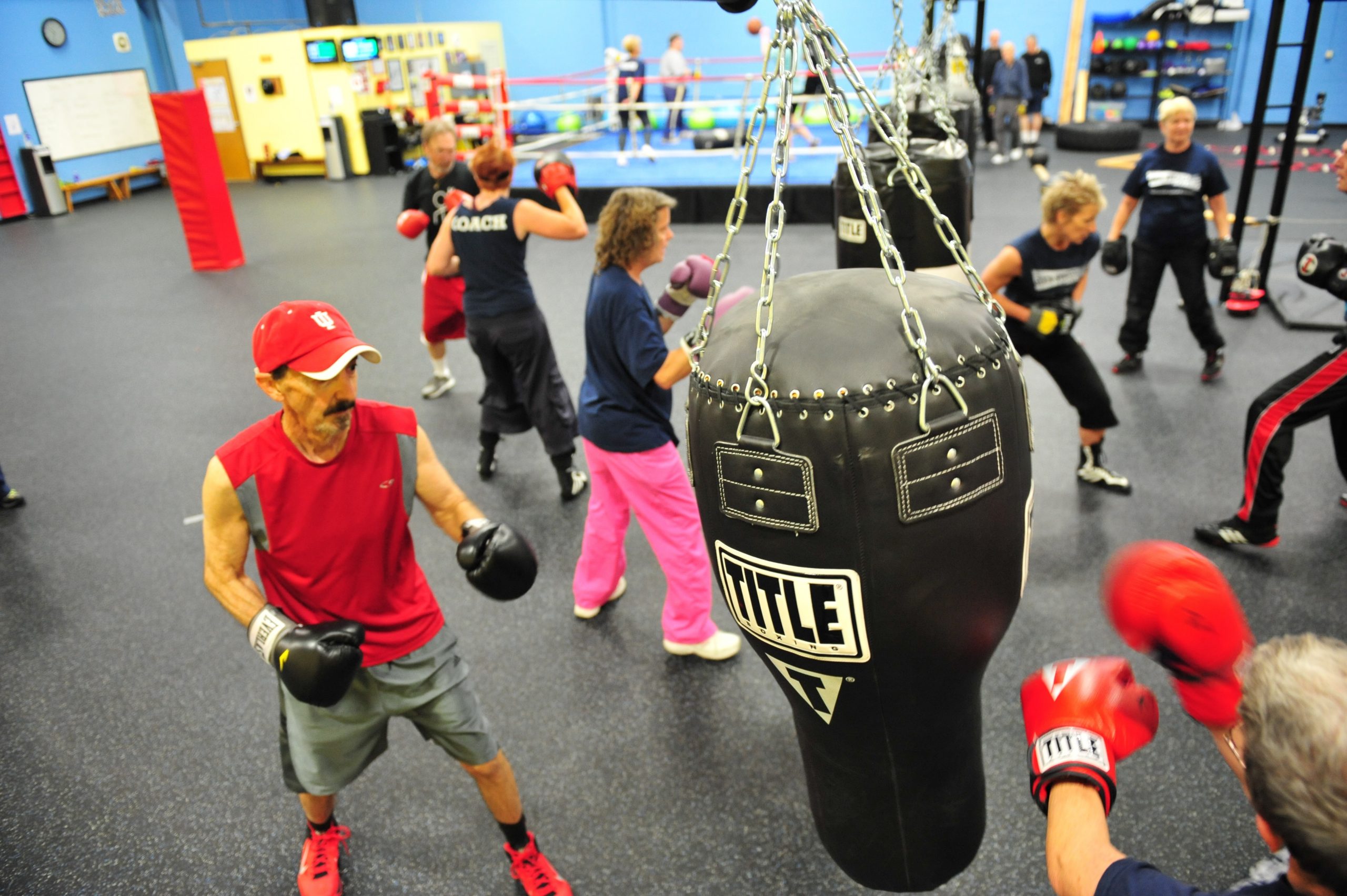Rock Steady Boxing (RSB) is a non-contact boxing exercise program designed for people living with Parkinson’s disease. Parkinson’s is a progressive neurological disorder that affects balance, strength, flexibility, cognition, and mobility (e.g., walking).
Former , Scott C. Newman founded RSB. Newman was diagnosed with Parkinson’s at the age of 40 and experienced noticeable improvements in his symptoms after taking part in boxing workouts with friend and former Golden Gloves boxer, Vince Perez. Newman has said many times that, despite his Parkinson’s related tremors and balance dysfunction, after the boxing workouts he felt “rock steady.” Realizing they could help others with Parkinson’s to live better through boxing, Newman and Perez joined forces with World Champion professional boxer, Kristy Rose Follmar to develop the Rock Steady Boxing method. They opened the first RSB gym in Indianapolis in 2006.

In the sport of boxing, a boxer must have enough endurance, strength, power, agility, flexibility, coordination, and speed to withstand a three-minute round. Accordingly, boxing training should include a well-rounded, whole-body approach to fitness. The Rocky movies provide examples of how actor Sylvester Stallone’s character Rocky used various workout regimens to train for fights—running, push-ups, jumping rope, footwork, punching bags, etc. This makes boxing training uniquely situated to address many of the impairments experienced by those with Parkinson’s.
In general, the RSB workout includes three parts: a warm-up with dynamic stretches, voice activation activities, and cardio/endurance exercise; an intensive circuit workout that includes the fundamentals of boxing (shadow boxing, punching drills, speed bags, heavy bags, etc.), strength training, core exercises, and functional movement fitness activities; and a cool down with stretching and breathing exercises. Integral to all RSB workouts are celebrations of victories, Rock Steady chants, and positive emotional support among coaches, boxers, and cornermen (caregivers and volunteers).

Multiple large-scale studies demonstrate that non-contact boxing training developed by RSB is safe and feasible for persons with Parkinson’s disease. Evidence shows that boxing significantly improves balance and health-related quality of life in people with Parkinson’s disease. These are impactful findings given that Parkinson’s symptoms are expected to get worse over time. Additional evidence shows that the RSB approach builds a sense of community and camaraderie among the boxers with Parkinson’s, key features that motivate participants to adhere to the exercise program.
Driven by research, media attention, and anecdotes of effectiveness and empowerment, RSB has grown to over 800 affiliate gyms located in all 50 states across the US and 14 countries spanning five continents. Rock Steady Boxing’s mission to equip affiliates and empower coaches to improve the quality of life of people with Parkinson’s disease through a non-contact boxing-based fitness curriculum has made RSB the largest exercise program in the world for people with Parkinson’s.
The RSB Headquarters in Indianapolis has a membership of more than 200 boxers and provides support and training options for new and existing RSB affiliate programs, specifically head coach, assistant coach, and clinician (therapy/rehabilitation providers) training. The RSB Head Coach Training Camp is a Parkinson’s-specific exercise program accredited through the Parkinson’s Foundation. This accreditation recognizes RSB’s compliance with the Parkinson Foundation’s criteria for exercise education programs and competency framework for exercise professionals.

Help improve this entry
Contribute information, offer corrections, suggest images.
You can also recommend new entries related to this topic.
